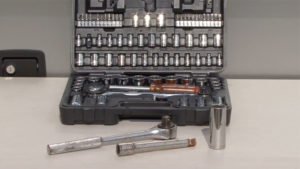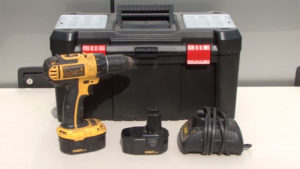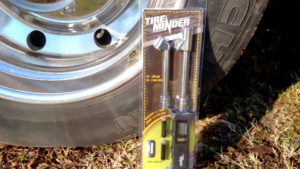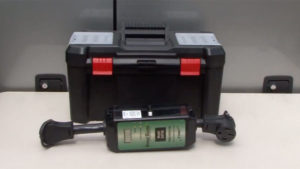RV Education 101
Essential Tools and RV Supplies to Have on Hand During RV Trips
Storage space is extremely limited on some RVs, which means space for tools and RV supplies is limited too. When that’s the case, you need to scale back and only keep what you consider as absolutely essential. I’m fortunate to have an entire exterior storage compartment dedicated to what I consider are essential tools and RV supplies to have on hand during RV trips.
Earlier this year, when I was doing some cleaning and reorganizing, I discovered tools in my storage compartment that I haven’t used since I put them there. I like to have the right tool for the job, but I decided to be more practical and organize my storage compartment with tools and RV supplies that really are essential.
Let’s take a look at the tools and supplies that made the cut.
Scaling back on my RV toolbox was difficult, but in the end, it eliminated some excess weight, and opened up additional storage space for other supplies.
 For starters, I have a 3/8 inch ratchet and socket set. There are occasions when I need a socket set, and what’s nice about this particular set is it also includes a general purpose screwdriver with all the various screwdriver tips commonly used in RV construction.
For starters, I have a 3/8 inch ratchet and socket set. There are occasions when I need a socket set, and what’s nice about this particular set is it also includes a general purpose screwdriver with all the various screwdriver tips commonly used in RV construction.
Speaking of ratchets and sockets, I keep a 1/2 inch drive ratchet, extension, and socket to remove the water heater drain plug. I like to drain the water heater tank after every trip, and now I don’t need to go hunting for the tools to do it. I keep an assortment of common hand tools like standard and metric wrenches, an adjustable wrench, needle nose pliers, regular pliers, vice grips, diagonal cutters, a hammer, and a utility knife.
 Something I never leave home without is a cordless drill and the battery charger. A cordless drill is good for drilling, tightening or loosening screws, or nuts and bolts. And if you have the right attachment, you can raise and lower stabilizer jacks.
Something I never leave home without is a cordless drill and the battery charger. A cordless drill is good for drilling, tightening or loosening screws, or nuts and bolts. And if you have the right attachment, you can raise and lower stabilizer jacks.
To go along with the cordless drill, I keep an assortment of drill bits, nut drivers, and other types of bits on hand.
Another handy tool is a battery filler. When lead acid batteries are charged, water can evaporate, and it needs to be replaced with distilled water.
Checking and watering batteries goes a long way to extending the life of your RV batteries.
Additional tools and supplies for battery maintenance are gloves, safety glasses, and some sandpaper. I also keep a couple of funnels in the RV. One is for adding fluids like engine oil, and the other one is for sanitizing the RV water system.
We keep a couple of flashlights inside the RV, but I like to keep a good, small LED flashlight in my toolbox compartment too. Now, let’s look at some essential RV supplies. I’m not talking about RV supplies like holding tank treatments and disposable gloves.
I’m talking about essential tools and supplies needed to help keep the RV in top operating condition when you’re on the road.
 Let’s start with a quality tire inflation gauge. You not only want an accurate inflation gauge, but you want one with a dual foot design and one that is capable of checking high air pressure like what is typically found in motorhome tires. It’s important that you know what the tire inflation is for your RV tires, and that you check the tires on a regular basis, especially when you’re on the road. Store your tire inflation gauge in a protective case and away from other tools where it could get banged around.
Let’s start with a quality tire inflation gauge. You not only want an accurate inflation gauge, but you want one with a dual foot design and one that is capable of checking high air pressure like what is typically found in motorhome tires. It’s important that you know what the tire inflation is for your RV tires, and that you check the tires on a regular basis, especially when you’re on the road. Store your tire inflation gauge in a protective case and away from other tools where it could get banged around.
Next is a digital volt meter. This is absolutely essential. You can use it for a quick check of the battery’s state of charge. You can test 12-volt DC circuits and 12-volt fuses. And you can check 120-volt AC circuits and outlets. I keep some spare fuses on hand just in case.
In addition to a volt meter, I keep a digital line monitor in the RV. You can use it to test the faulty wiring at the campground before plugging the RV in, and you can use it to monitor AC voltage during your trip. This particular model also monitors frequency when a generator is running.
 The digital line monitor comes in handy, but I rely on a quality surge protector to monitor and protect the RV from electrical problems at the pedestal. There are numerous brands available with different features and capabilities. I personally use a Surge Guard product on our RVs.
The digital line monitor comes in handy, but I rely on a quality surge protector to monitor and protect the RV from electrical problems at the pedestal. There are numerous brands available with different features and capabilities. I personally use a Surge Guard product on our RVs.
I keep a caulk gun and a tube of sealant on-hand. I also have a roof repair patch just in case. The patch can be used to repair a tear in the roof or in an awning.
In a separate storage container, I keep some common electrical connectors, a roll of wire, electrical tape, Teflon tape, zipties, a good wire stripper, cutter, and crimping tool, a 12-volt test light, and an assortment of nuts, bolts, screws, and washers.
I keep a pair of safety glasses on-hand for when I am using power tools or checking the batteries. I always have this portable lithium battery jump box and a basic road hazard kit.
I keep a can of spray lubricant in the RV. It can be used for anything on the RV that needs lubrication, and it helps stop any annoying squeaks and squeals on the RV.
I have shop towels and of course, a roll of duct tape. Duct tape can always get you out of a jam.
I’m sure there are other tools and supplies that could be on the list, but I have always gotten by with whatever needs to be done on the road with these tools and essential RV supplies.
Happy camping.
Happy camping from Mark Polk of RV Education 101

